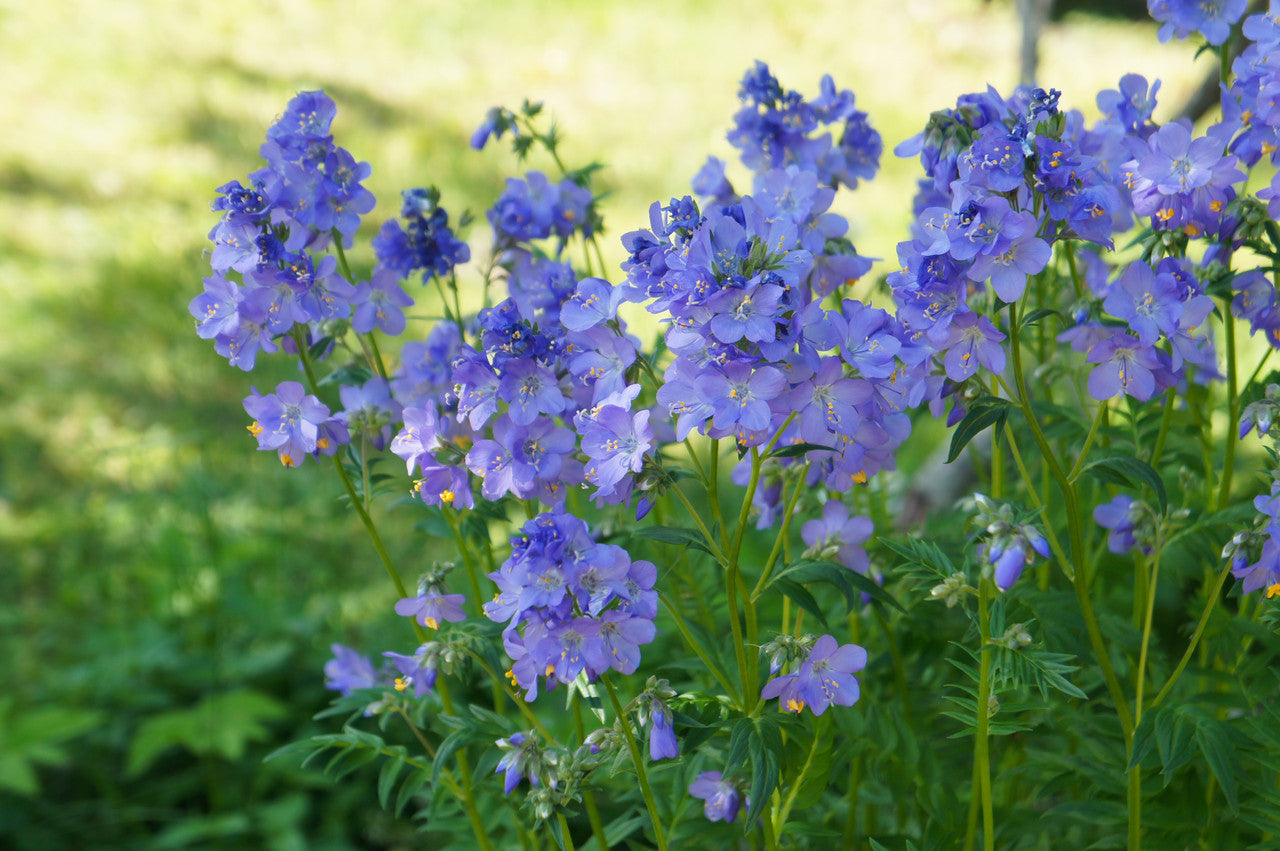
Jacob's Ladder
Jacob’s Ladder (Polemonium reptans) is a native perennial with clusters of delicate blue, bell-shaped flowers and compound leaves that resemble a ladder, hence its common name. This easy-to-grow wildflower is a reliable addition to any woodland garden, naturalized area, or shady border, offering soft color and attractive texture to early spring landscapes.
When do Jacob's ladder bloom?
Blooming in mid to late spring, Jacob’s Ladder features airy spikes of pale blue to lavender flowers that softly nod above fern-like foliage. The blooms have a sweet fragrance and attract bees and butterflies, making them an important early source of nectar for native pollinators. The common name of the plant comes from its distinctive leaves, which are pinnate and composed of several pairs of leaflets that are opposite each other and connected by a central stem, creating the appearance of a ladder.
Jacob’s Ladder is a woodland plant that prefers partial shade and fertile, moist, well-drained soil. It’s ideal for naturalizing in woodland margins, shady rock gardens, or alongside streams and ponds, where the soil is cool and relatively moist. It can tolerate some afternoon sun if it is kept well watered, but will look its best in filtered or dappled shade.
One of the great things about Jacob’s Ladder is its easygoing nature: it’s not aggressive, but it will self-seed freely, so in time, it will create soft drifts of foliage and flowers without taking over the garden. It’s a relatively low-maintenance plant once established; just cut back the flower stalks after they fade to keep it tidy, and water it during extended dry spells.
Jacob's ladder are spring blooming perennials.
Jacob’s Ladder is a long-lived plant that has a good deal to offer throughout the season: in addition to its lovely spring blooms, the finely cut foliage remains attractive into summer, when it adds delicate texture to shady spots. It can be mixed with other spring wildflowers such as trilliums, Virginia bluebells, wild geraniums, and ferns, or used as a soft, delicate accent.
A plus for gardeners who like plants that are both beautiful and useful: Jacob’s Ladder is a valuable food source for pollinators in early spring, providing nectar and pollen to bees and butterflies emerging from hibernation. It’s a great choice for gardeners who want to create layered, naturalistic spaces full of native plants and support native wildlife.




